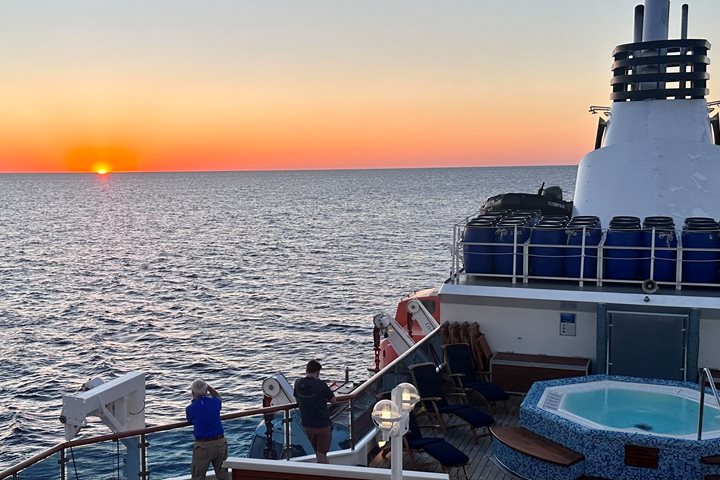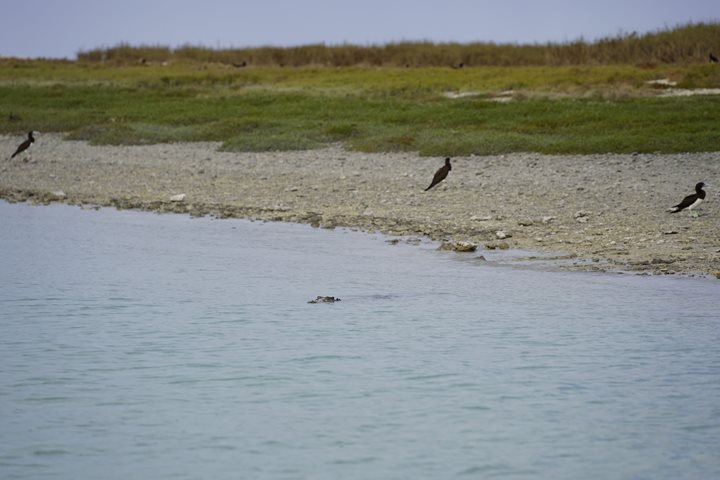The curtain rose on our expedition exploring the wild coast of Australia’s Kimberley region this morning and an elegant sunrise slowly brought up the lights. Today’s setting was Yampi Sound, wide waters, glassy calm as the day began, surrounded by low islands of orange sandstone. These ancient rocks will remain a theme throughout our journey, a setting that anchors this remote corner of northwest Australia in the deep history of our planet and will provide a spectacular backdrop for our explorations over the coming days.
Soon, as we moved further into the Sound, we could see a layer of dark rock rising to nearly thirty feet above the water’s edge, indicating the incredible range of tides on this coast. This great pulse of the sea will be another theme of our expedition. The tides have carved the intricacies of the Kimberley shores over the past few million years and day-by-day they will dictate the timing of our excursions.
This morning the tides were kind and gave us a chance to sleep in a bit and enjoy a leisurely breakfast before we boarded the Zodiacs for our first excursion. Once we were underway it was a short ride up a hidden channel to the morning’s destination, a beautiful freshwater pool and waterfall caught in a small rocky amphitheatre just above the high tide. This was Crocodile Creek, a very ironic name since this is one of the very few places along our route that is free of saltwater crocodiles and thus a good place for a swim. We plunged in, played with a pair of inflatable crocs that had somehow taken up residence there and enjoyed a refreshing drink provided by our wonderful hotel staff.
After our swim we returned to the National Geographic Orion for a delicious lunch and very soon we were off again, this time for a Zodiac cruise along the coast. The sandstone here is very old indeed, not much less than half the age of the planet, and in this northwestern corner of the Kimberley the layers of orange and grey sediments have been dramatically folded into a series of synclines and anticlines, waves and curls of stone that are a dramatic reminder of the titanic forces that joined the Kimberley to the continent 1.8 billion years ago.
After brief contemplation of these nearly unimaginable depths of time, we returned our attention to the present, taking note of nesting Ospreys and the gigantic tailings of a now-closed open-pit iron mine. Lastly our thoughts were drawn into the past again, this time to the early history of our own species as we cruised past a little known site that has yielded the earliest evidence of human occupation of Australia, a campsite from approximately 50,000 years ago.
Sunset brought the curtain down on our day; the first act of our expedition was complete. The day’s story had set the scene, introduced us to the major characters and whetted our appetite for the action to come. But now the theatre was dark and it was time to come indoors for the Captain’s welcome cocktail reception, a perfect intermission.









